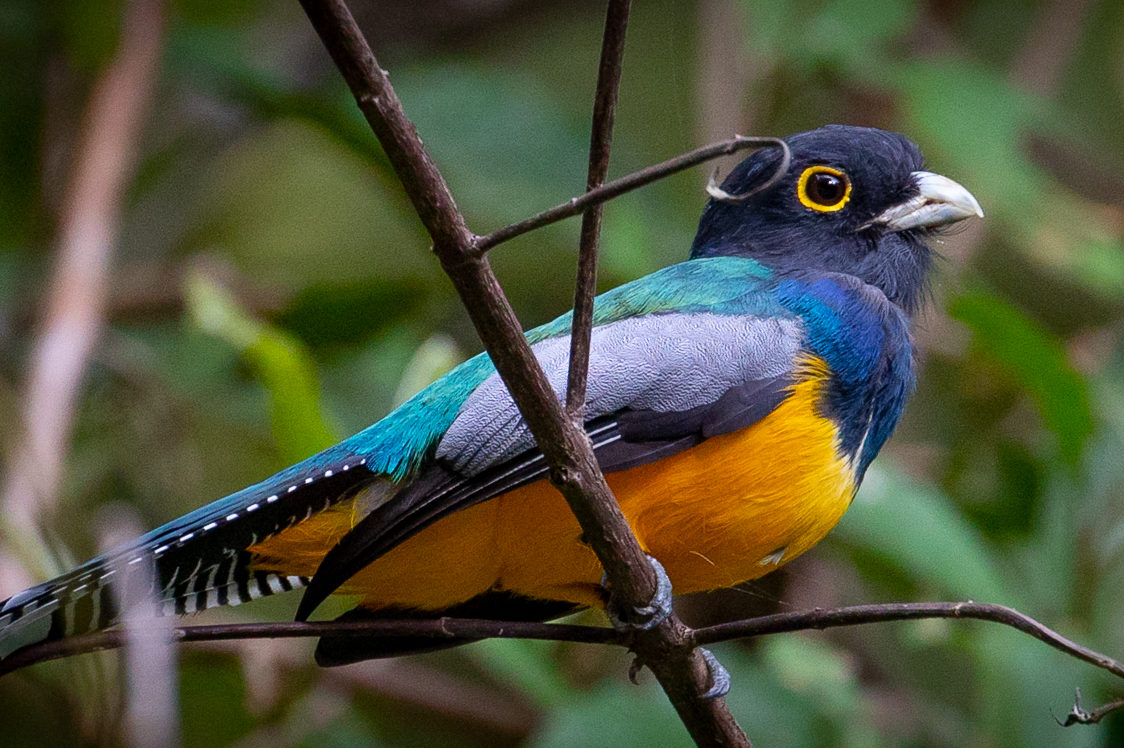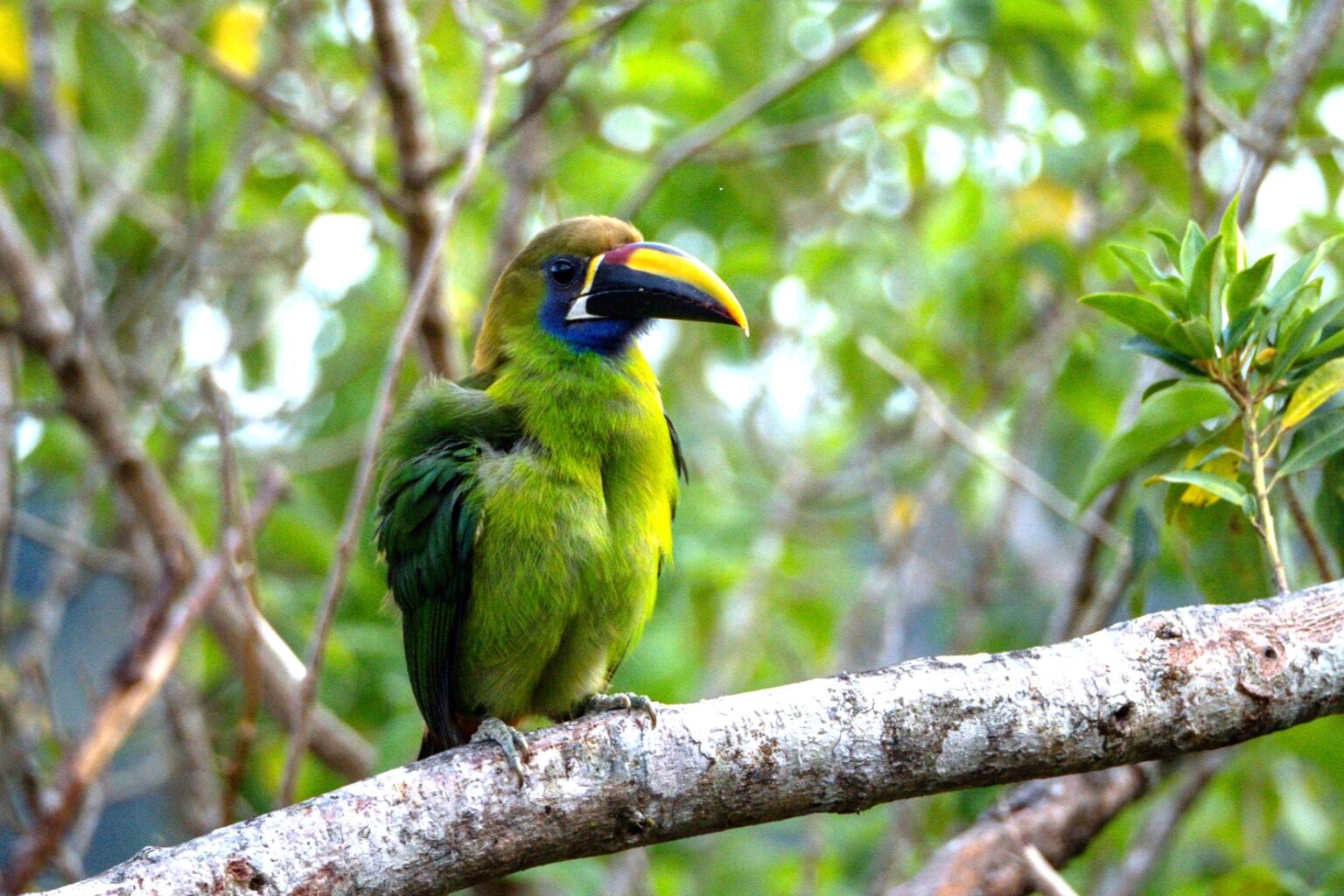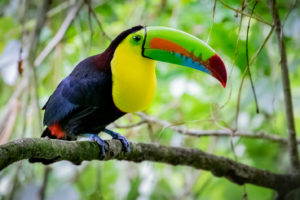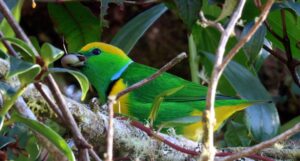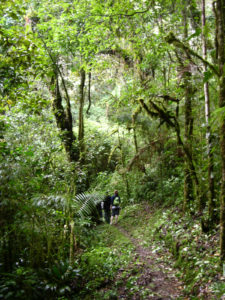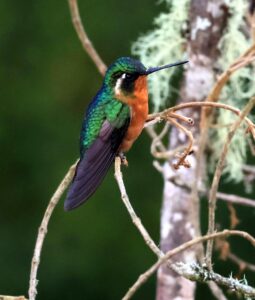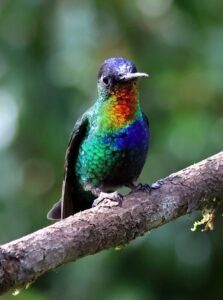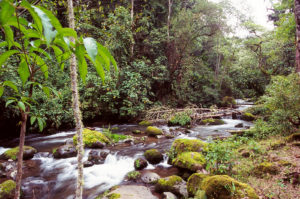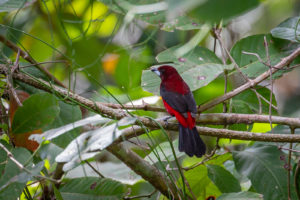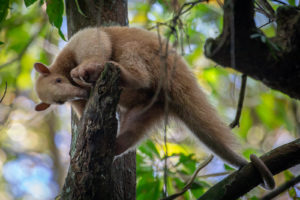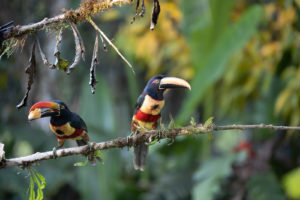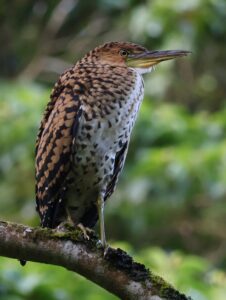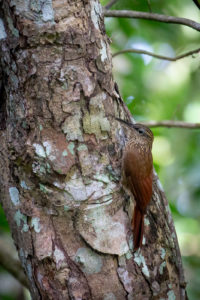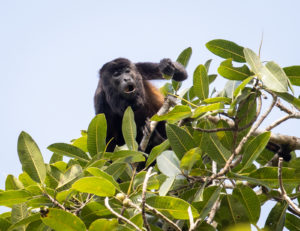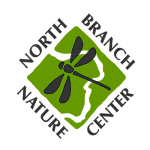Costa Rica: An Intro to Tropical Birding
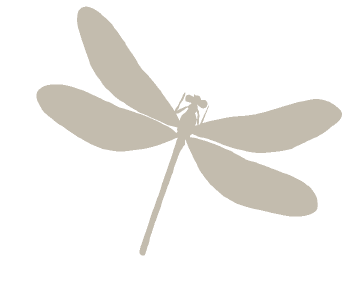
March 18 - 27, 2026
$4,500 - Double Accommodations
$4,900 - Single Accommodations
($500 deposit due upon registration)
10 participants max
C
osta Rica offers both a wonderful introduction to tropical birding and a destination to return to again and again. Twice the size of Vermont, the country has over 800 bird species, including 50 species of hummingbird alone. In addition to all the tanagers, parrots, and raptors, there are sloths, monkeys, orchids and beautiful butterflies to enjoy. Our group will visit a wide variety of tropical habitats in search of Keel-billed Toucan, Resplendent Quetzal, Scaled Antpitta, Fiery-throated Hummingbird and so much more. Comfortable lodging in beautiful, birdy environments will make for an unforgettable experience.
Costa Rica is a place of kind hearts, good infrastructure, and spectacular biodiversity. It is among the safest, easiest, and most comfortable places to travel in Central and South America. Less-experienced travelers will find that Costa Rica is the perfect gateway to tropical nature travel and birding.
Additional Information
(Click each tab to expand)
Flow of the Day: The itinerary is designed to maximize our experience with Costa Rica’s great diversity of birdlife and ecosystems. We won’t, however, be rushing from place to place to chase the largest species list possible. Our goal is to spend time appreciating the species we encounter at an enjoyable pace. Birding walks begin in the early morning, and we travel slowly to allow for the best bird and wildlife encounters and observation.
Afternoon plans may allow for some rest time at the lodges, though this is not always feasible when we are transferring between lodges or birding far from the lodge on a given day.
Clothing: Pack light field clothing of neutral colors. Bring several pairs of long pants and comfortable, light, airy shirts. Long-sleeved (relaxed fit) shirts are useful for protection from the sun, as is a light hat or cap. Be sure to have a pair of comfortable walking shoes or hiking boots, plus a second pair of tennis shoes or sandals. A fleece, a hat, and gloves are important for our visit to higher elevation areas where it can be quite chilly. You may want more casual clothing for traveling or dinners. A small washcloth and handkerchiefs will be helpful.
Climate: Be prepared for the temperatures to be chilly sometimes in the mornings (50s), and to reach the upper 80s in the middle of the day. In the tropics, it is wise to be prepared for both strong sun and sudden rain.
Equipment: Bring a pair of binoculars, a field guide and a camera with extra batteries. Your guides will carry spotting scopes. Pack sunglasses and sunscreen, a small flashlight or headlamp, a small alarm clock (a smartphone will work), insect repellent, a small daypack, and a small folding stool if you get tired standing for long periods waiting for birds. A full packing list will be provided as the trip approaches.
Physical Expectations: Much of the birding on this trip will be along roadsides or easily walked trails, but do expect some hilly and muddy conditions at times (but nothing extreme). Participants should be ready to expect conditions that may be hot, cold, dry, wet, or anything in-between. Participants must be able to carry and manage their own luggage, and be comfortable going up and down stairs.
Health Considerations: Please consult your physician before the trip for any recommended immunizations. Mosquitoes and other small, biting insects can sometimes be a nuisance, especially in the forested areas. Chiggers are found in the grassy areas. We suggest repellent for your face and hands as well as your clothing. Permethrin-treated clothing works well.
Transportation: We will be traveling in a small bus. Trip capacity is limited for traveling comfortably in our vehicle.
Accommodations: All of the lodges where we’ll be staying are situated in or near ecological reserves. They are chosen for strategic access to great birding, rather than for the bells and whistles that come with more luxury resorts. That said, all lodges are clean and comfortable, and often allow for excellent birding right at the hotel property.
Meals: We'll have a hot meal each night for dinner at the lodge or in town. Breakfasts and lunches will be a combination of sit-down meals and picnics, depending on where we are. Our dining arrangements are selected to have filling, tasty meals without spending our peak birding times sitting inside restaurants. Most dietary restrictions can be accommodated with advance notice. Please reach out to us for more details about dietary accommodations.
Chip Darmstadt, Birding Ambassador and former executive director of North Branch Nature Center, is an avid neotropical birder and naturalist. Chip has guided birding trips around the US and around the world for 25 years, observing over 3,000 bird species along the way. After first working as a field biologist in Monteverde, Costa Rica, back in 1990, Chip has had the pleasure of bringing hundreds of nature lovers to the country over the years. This trip will also be guided by Cali Sojo, a renowned Costa Rican bird guide who has worked with Chip and North Branch Nature Center in the past. Cali has been employed as an expert bird guide at many of the country's best birding lodges.
The trip cost includes:
- Expert NBNC guide, Expert in-country bird guide, and an in-country driver.
- All accommodations.
- All food except airport meals.
- Entrance fees and park admissions.
- Transportation in a small, comfortable bus, including transfer to and from the airport.
- Use of high quality shared spotting scopes and binoculars.
- Pre-departure orientation gathering (virtual).
- Carbon offsets for all airfare and travel to, from, and during this trip.
The trip cost does not include:
- Airfare.
- Airport meals.
- Airport transfers that are not part of the group transfers in San Jose.
- Travel insurance.
- Alcoholic beverages, snacks and other incidentals.
- Guide and driver gratuities.
Here is an eBird list of all species seen in Costa Rica in March since 2021. The frequency bar charts will help give you an idea of how regularly each species is seen.
NBNC is proud to announce that all of our trips from 2025 onward are 100% carbon-neutral. This includes each traveler's flights to and from this destination, as well as carbon emitted during the trip.
How it Works: The voluntary carbon market has come under intense scrutiny in recent years as the legitimacy and effectiveness of many carbon offsetting projects have been called into question. That's why we're proud to be working directly with the Northeast Wilderness Trust's Wild Carbon program. The carbon credits we purchase to offset our carbon emissions are used to permanently conserve forestland as wilderness. Why wilderness offsets?
- It's Permanent: Unlike most contracts in the voluntary carbon market that have a lifespan of just 10-20 years, wilderness conservation is forever.
- It's Additive: Acreage purchased and conserved through wild carbon offsets would not be protected anyway through another mechanism later.
- It's "Leakproof:" Forest protection often just shifts and concentrates timber harvest elsewhere. But wilderness conservation is different–wilderness protection here doesn't just move carbon emission over there. That's because old forests function very differently than young ones. Big trees and old soils capture and store vastly more carbon than a young forest of the same acreage. Growing an old forest is like building a natural carbon sequestration factory!
- It's More than Carbon: With wilderness protection comes additional co-benefits like biodiversity conservation, flood resilience, and habitat connectivity. This way, going carbon-neutral isn't just negating our carbon footprint, it's also actively helping conservation in other ways.
Want to learn more?:
- Read The Ecotourism Dilemma, our article on how we think about carbon emissions in the context of nature travel.
- Check out this FAQ for NBNC travelers about Northeast Wilderness Trust's Wild Carbon Program.
- To learn more about forest carbon storage, please watch Understanding Forest Carbon by climate forester Dr. Ali Kosiba.
- Please see our COVID-19 page for NBNC's full policies surrounding COVID and other illnesses.
- All participants and instructors will be required to affirm negative test results from a self-administered Covid-19 rapid antigen test taken prior to arrival on the first day of the program.
- Participants on NBNC’s Adventures Afar and multi-night overnight trips must be comfortable with the possibility that someone on the trip may contract Covid-19 (or other contagious illnesses) during the trip, even if they test negative on the first day as required. NBNC will attempt to limit exposure and isolate any such participant, which could include that participant incurring additional expenses such as hotel rooms, meals, or transportation, and missing out on group activities. However, isolation may not be possible at all times on all trips, so all participants should be aware that circumstances may require that a participant with Covid-19 continue to travel with the group.
- Participants experiencing respiratory symptoms will be required to wear a mask at all times when around other travelers.
- Failure to comply with the health and safety instructions of the trip guides will result in dismissal from the trip.
- NBNC encourages all Adventures Afar participants to be honest and transparent about their symptoms, for the sake of their health and the health of those they are traveling with.
- NBNC encourages all Adventures Afar participants to secure individual travel insurance.
Ready to go to Costa Rica?
Email Sean@NorthBranchNatureCenter.org to get signed up.
Payment Schedule
- A $500 deposit is required to reserve your space on the trip.
- 50% of the trip balance will be due 6 months before the departure date.
- The remaining trip balance will be due 3 months before the departure date.
All payments can be made via ACH withdrawal, or by check. Credit card payments will incur a 3% surcharge.
Cancellation Policies
We understand that incidents and emergencies arise that may force you to cancel your trip. However, NBNC invests considerable time and, in many cases, non-refundable payments to lodges and local contractors to secure our rooms and programming. NBNC aims to be as flexible as possible in our refund policy, but a full refund of your payments may not be possible after the dates indicated. All cancellations must be made via email to NBNC.
-
Cancellation more than 180 days before the trip: Full refund of all payments.
-
Cancellation 90-180 days before the trip: Refund of any payments minus the $500 deposit. If your space is filled by another traveler, we will also refund your deposit.
-
Cancellation 30-90 days before the trip: No refund guaranteed. If your space is filled by another traveler, we will provide a full refund minus the $500 deposit.
-
Cancellation less than 30 days before the trip: No refunds guaranteed.

Day by Day Itinerary
March 18: Travelers will arrive into the San Jose international airport in Costa Rica today. Your guides will provide flight recommendations as the trip approaches to ensure that you have a smooth arrival into town. Travelers flying in today will be picked up at the airport and shuttled to our lodge. We'll have a group dinner tonight to get to know one another, meet our guides, and discuss the week ahead. Overnight at Hotel Bougainvillea.
March 19: Beginning at daybreak, we will spend a leisurely hour or so birding the grounds of the hotel. Those who are visiting the neotropics for the first time will have the chance to make acquaintances with some very common and widespread species such as Rufous-tailed Hummingbird, Tropical Kingbird, Blue-gray Tanager, Rufous-collared Sparrow, and Costa Rica’s National Bird, the Clay-colored Thrush. Several species of North American migrants will likely be found, along with resident species that might include Red-billed Pigeon, Lesson’s Motmot, Hoffmann’s Woodpecker, Crimson-fronted Parakeet, and Cinnamon-bellied Saltator.
After breakfast, we’ll journey to Rancho Naturalista, a famed birding lodge in the Caribbean foothills. The smoldering Turrialba Volcano will provide the backdrop to hummingbirds swarming at feeders just a few feet away. Meanwhile, a variety of other tropical species will be devouring bananas around the grounds. The hummers could include White-necked Jacobin, Green-breasted Mango, Green-crowned Brilliant, and Crowned Woodnymph. We’ll likely encounter Gray-headed Chachalaca, Collared Araçari, Black-cheeked Woodpecker, Brown Jay, White-lined Tanager, and various other species pecking away at the bananas.
Some of the smaller hummingbird species at Rancho rarely come to the feeders, so we will investigate the flowering verbena hedges for Stripe-throated Hermit, Green Thorntail, Black-crested Coquette, and the incomparable Snowcap. One truly memorable experience of a visit to Rancho Naturalista is spending the late afternoon watching hummingbirds coming to bathe in small pools along a forest stream. Overnight at Rancho Naturalista.
March 20: Birding in the forest at Rancho is a lot more challenging than the balcony birding, but it’s the only way to see the many species that rarely if ever venture out of their shadowy habitat. Some of the birds we’ll be looking for on our forest walks include Purplish-backed Quail-Dove, Dull-mantled Antbird, Middle American Leaftosser, Brown-billed Scythebill, Fawn-throated Foliage-gleaner, Scale-crested Pygmy-Tyrant, Tawny-chested Flycatcher, White-crowned Manakin, Black-headed Nightingale-Thrush, and Tawny-capped Euphonia. Overnight at Rancho Naturalista.
March 21: We’ll have another full day in the area and will likely go off-site in search of species not yet seen. Possible objects of our search could include Sunbittern, Lanceolated Monklet, Red-fronted Parrotlet, Lovely Cotinga, or Gray-headed Piprites. In addition to all the birding, we'll also keep an eye out for other common Costa Rican wildlife like howler monkeys, spider monkeys, and white-faced capuchins. Iguanas and geckos may decorate the trees, while incredible flowers bloom all around, attracting diverse pollinators. Overnight at Rancho Naturalista.
March 22: Today we pack up and travel a short distance to Hotel Quelitales. Though less than an hour and a half drive, birding stops en-route will make this an all-day affair. Some of the species encountered might be Black-bellied Whistling-Duck, Garden Emerald, Limpkin, Green Ibis, Least Bittern, Snail Kite, Cabanis’s Wren, White-eared Ground-Sparrow, Cabanis’s Ground-Sparrow, Red-breasted Meadowlark, and Olive-crowned Yellowthroat.
Our new destination is also more than 1,000 feet higher in elevation than the previous one and thus offers a different mix of species at the gardens and feeders. Among those we’ll be hoping to see are Black-breasted Wood-Quail, Lesser Violetear, White-bellied Mountain-gem, Stripe-tailed Hummingbird, Scaled Antpitta, Slaty-backed Nightingale-Thrush, Chestnut-capped Brush-finch, Sooty-faced Finch, and Slate-throated Redstart. Overnight at Hotel Quelitales.
March 23: Depending on various factors, your guides will make the call on where the group goes birding today. But no matter what the actual destination, you can be assured of spectacular bird and wildlife diversity and immersion in stunning upper-elevation rainforest ecology. Overnight at Hotel Quelitales.
March 24: Today, we journey up to the highest point along the Pan American Highway in Costa Rica—at 10,800 feet—where we’ll be looking for the range-restricted Talamanca, Fiery-throated, and Volcano Hummingbirds, Black-capped Flycatcher, Timberline Wren, Black-billed Nightingale-Thrush, Sooty Thrush, Long-tailed Silkyflycatcher, Sooty-capped Chlorospingus, Volcano Junco, and Large-footed Finch before dropping down into the valley of San Isidro de El General.
At these higher altitudes, the forests strain moisture from the daily clouds, providing a constant moist environment, even in the dry season. This cool, wet, and consistent climate yields the spectacular cloud forest ecosystem—tall forests of giant trees totally draped in vines, bromeliads, and mosses. Here, seemingly every inch of horizontal and vertical space in the forest is filled with lush and staggering diversity, with birdsong filling the gaps. Overnight at Talamanca Nature Reserve.
March 25: The extensive property of the Talamanca Nature Reserve makes it a destination in itself. Here one can find the majority of the Near-Endemic species that occur in the southern Pacific half of Costa Rica, including Costa Rican Swift, White-tailed Emerald, Fiery-billed Aracari, Sulphur-winged Parakeet, Chiriqui Foliage-gleaner, Isthmian Wren, Riverside Wren, Spot-crowned Euponia, and Costa Rican Brushfinch. Among other more widespread species, we might also add to our list such species as Scaled Pigeon, Barred Hawk, Red-headed Barbet, Scaly-breasted Wren, Orange-billed Nightingale-Thrush, Elegant Euphonia, and Speckled Tanager. Checking the boulders in the rushing Chirripo River might produce views of Torrent Tyrannulet and American Dipper. Overnight at Talamanca Nature Reserve.
March 26: We’ll retrace our route over the Pan American Highway en route back to the Central Valley and will make an effort to find any of the highland species we may still be missing. Perhaps we’ll enjoy views of Black Guan, White-throated Mountain-gem, Costa Rican Pygmy-Owl, Spot-crowned Woodcreeper, Ruddy Treerunner, Yellow-winged Vireo, Yellow-thighed Brushfinch, Flame-throated Warbler, and even Resplendent Quetzal, should we still be in search of this spectacular creature. Overnight at Hotel Bougainvillea.
March 27: This morning we'll arrange for everyone's return to the San Jose airport in time to catch your departing flights home.

